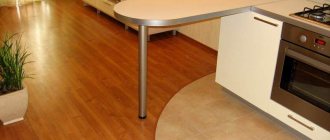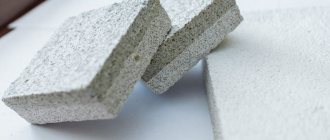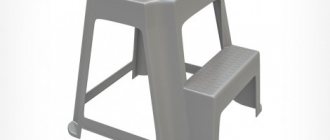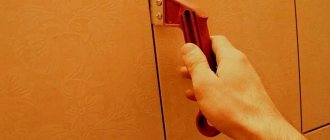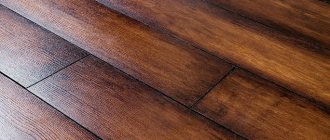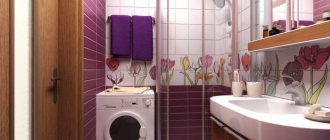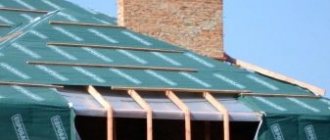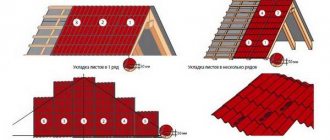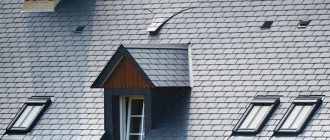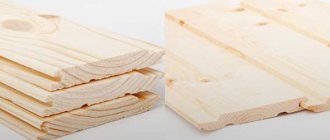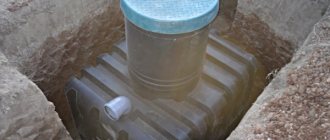The floor in the garage is constantly exposed to aggressive influences and increased mechanical stress. It is extremely important to immediately think about the optimal coating option. Nowadays the demand for tiles is growing. And many responsible garage workers prefer to lay porcelain tiles for the garage on the floor. The coating is durable, wear-resistant, aesthetic and durable. You can also choose other types of tiles.
Today we will look in more detail at the features of different types of tiles for garage flooring. Let's look at five options that are widespread. We will also pay attention to porcelain stoneware. Let's find out its main advantages and disadvantages, find out how best to install it.
Characteristics of flooring
Technical porcelain tiles have the following properties:
- wear resistance;
- strength (withstands a load of 200 kg / 1 cm²);
- frost resistance;
- low porosity;
- low heat dissipation;
- excellent moisture resistance;
- absolute fire safety.
Porcelain tiles are easy to care for. If proper care is provided, the service life of the cladding product will reach 50 years. The coating does not deform during temperature fluctuations.
This facing material also has disadvantages. The main disadvantage is the fragility of the floor covering. Therefore, special attention should be paid to the correct transportation of the cladding product. You should not use porcelain tiles in a garage that is not heated. This is explained by the fact that this flooring material is characterized by minimal thermal insulation qualities.
To carry out the work efficiently, you will need the following materials and tools:
- the facing material itself;
- special glue;
- concrete solution;
- grout for seams;
- building level;
- roulette;
- Bulgarian;
- 2-3 diamond discs;
- construction mixer;
- serrated and rubber spatulas;
- Master OK;
- rubber hammer;
- container for working mixture;
- plastic crosses for seams.
The technology for installing a porcelain stoneware floor is similar to laying any floor covering. A distinctive feature of the material is its heavy weight. For this reason, it will be necessary to use a special glue, which should reliably connect the finishing cladding to the subfloor.
There is another problem that you may encounter during installation work. It is associated with the high strength of porcelain stoneware, which, if necessary, will complicate the process of cutting it.
We grout the joints
Expansion joints can be sealed with any sealant. A day after the glue dries, the final grouting of the tile joints is carried out. The mixture is applied with a rubber spatula or grater. The remaining mixture is removed immediately.
After installation is completed, it is recommended to check the gate for free movement. The floor is ready for full use in 2-3 weeks.
When installing porcelain tiles on the garage floor, some craftsmen create a slight slope. This will allow you to wash the car right in the box. For drainage, a container is provided in the middle or a storm drain at the entrance. A significant advantage of floor tiles is that there is no need for major repairs of the entire floor. If one segment is damaged, it can be easily replaced with a new one.
Using cheaper materials is only a one-time saving. Renewing a leaking floor or walls every year is not very exciting. Alterations are not cheap either. To avoid mistakes, approach all stages of work responsibly. If you are not confident in your abilities, invite a specialist. Laying porcelain tiles is a labor-intensive and technically complex process. Maybe choose a rubber coating for the garage?
Material selection
When purchasing a cladding product, you should immediately pay attention to the packaging. It must indicate the company and state in which the floor covering was manufactured.
Porcelain tiles for installation in garages can be polished or unglazed. The first type is distinguished by its excellent appearance and maximum resistance to stress. But it has a significant drawback - the mirror surface is easily damaged by wheels with studded tires (when slipping or sharp braking).
The most suitable product is unglazed flooring. It is better to use a matte variety without glaze. This material does not require special care. And there are practically no visible scratches on it.
As for the sizes, for a garage with 1-2 cars, a coating measuring 30*30 cm or 45*45 cm is used. The optimal thickness of ceramic tiles for a garage floor is 8-9 mm. If there are more than 2 cars in the garage, then you need to purchase material with a thickness of 10-12 mm and a size of 60*60 cm.
The quality of porcelain stoneware is determined using a regular marker, which is used to draw a small line along the surface of the coating. If after 5-7 minutes the line is wiped off without problems, then the material is of high quality.
When purchasing, pay attention to the reverse side of the floor covering. It should not have too deep depressions. Their depth should not exceed 2 cm.
To distinguish porcelain stoneware from tiles, you should carefully examine the cut of the floor covering. Porcelain tiles have a homogeneous structure. The tiles are painted in a certain color, which differs from the main part of the material when cut.
When purchasing a special glue, due attention is paid to such characteristics as plasticity, the ability to withstand maximum loads and the optimal hardening period. You can also use regular tile adhesive. But the greatest effect will be obtained when using a specialized mixture (Eunice Granite, Werker or Knauf Fliesen).
Preparatory stage
At this stage, the surface is leveled. Height differences of more than 1.5 cm are eliminated using a concrete screed. Small differences are leveled out during installation of the floor covering by applying a thicker layer of adhesive.
When installing a heated floor with porcelain stoneware, the preparatory stage includes:
- waterproofing material flooring;
- installation of heated floor elements;
- surface concreting;
- solidification of the solution;
- treating the floor with an antiseptic and primer;
- surface drying.
If the old floor was wooden, it should be dismantled and replaced with new boards. But a more expedient solution would be to replace the wooden flooring with a concrete base. You can either create a new concrete floor or pour expanded clay with concrete, which fills the space between the joists.
Tiles on concrete base
The slab will protect the concrete screed from destruction.
In the garage, the need for a concrete floor is beyond doubt. Static and dynamic loads from transport require the manufacture of a reliable foundation made of reinforced concrete.
A garage with a concrete base will serve more than one generation of owners, but dust from concrete is a serious drawback when using the premises.
One of the options for getting rid of dust is to add a topping mixture to the concrete floor screed at the manufacturing stage to strengthen the surface layer of the base, but in private garages this technology is rarely used due to the complexity of its implementation, so tiles are used to install the floor covering, which can be laid independently.
To lay tiles on a concrete base yourself, you cannot do without professional experience.
Installation work
After preparing the base and preparing the working mixture, they begin to lay porcelain tiles for the floor in the garage.
The technology for creating a porcelain stoneware floor involves performing the following sequential steps:
- applying glue to the floor and floor covering (using a notched trowel);
- laying the first tile in the corner farthest from the entrance to the garage (at a distance of 5 mm from the wall);
- installation of the following tiles (checking the correct horizontal position with a level);
- leveling the facing material in a plane using a rubber hammer (if necessary);
- removing excess glue;
- inserting plastic crosses into the seams between tiles;
- hardening of glue;
- grouting the tile joints with a rubber spatula.
Porcelain tiles can be moved. But this is done until the glue has hardened. The tile is carefully pressed to the base with light rotational movements. There should be no voids between the finishing coat and the screed. Otherwise, it will lead to damage to the porcelain stoneware.
One more nuance should be taken into account. When laying the facing material, breaks are taken. After the break, the previously laid tiles will be located below the newly laid porcelain tiles.
In the process of masonry work, you have to deal with the fact that the floor covering has to be cut. For these purposes, you should use a grinder equipped with a diamond blade.
It is recommended to use the garage only 2-3 weeks after the final installation of porcelain tiles.
Mandatory base treatment
Before laying the finishing material, be sure to install the base. After clearing it of debris, make a concrete screed. The main thing is that it is smooth and complete, without voids or gaps. Otherwise, the floor will quickly become unusable. Don't forget to make a slight slope towards the gate to allow water to drain. Before starting work, make sure that the characteristics of your building materials and products meet all requirements. That surface materials have properties that correspond to the selected type of tile and the conditions of future use.
If you plan to wash your car in the garage, then simply tilting towards the entrance to the garage will not be enough. We advise you to install a drain grate. You can do it right at the entrance to the garage, keeping the slope in its direction. Another option is to make a drain in the center of the garage, along its long edge. In this case, the slope of the base should be made “book” so that the water flows to this very center.
How to lay porcelain tiles on a garage floor
The most successful alternative to concrete covering in a storage room for any car is porcelain tiles for the garage floor. Of course, you can also cover it with self-leveling mixtures (so-called self-leveling floor or liquid linoleum). However, tiles are much cheaper, and in terms of quality and stated requirements they are not much inferior to industrial flooring.
With the correct selection and adherence to installation technology, porcelain tiles for a garage floor can become not only a reliable coating that can last for many years, but also add a unique charm to the interior of such a specific structure. Before purchasing porcelain tiles, you need to understand what requirements it must meet. It is also important to understand how to carry out the installation work yourself, so that later you will not have to think about updating the coating in the garage and renovating the premises for a long time.
No. 2. Paving slabs
Paving slabs can be used not only to lay the area in front of the house and garden paths, but also the floor in the garage. This is a fairly budget and practical option. Concrete tiles are the most widely used. It is made from a concrete mixture that is used to fill molds. They are placed on a vibrating table, where the process of compacting the future tiles takes place (vibratory casting method). Additionally, a press can be used, which can significantly reduce compaction time (vibratory compaction method). Due to the presence of special additives in the concrete mixture, the finished material is resistant to moisture.
Main advantages :
- high resistance to mechanical loads, which is ensured by the significant thickness of the products;
- wear resistance;
- low level of slipping, which is important for a room where the floor will often get water and other liquids;
- durability;
- huge assortment. The garage can be decorated with either regular gray rectangular tiles or colored figured ones, creating an interesting pattern;
- easy installation;
- low cost, and if you take into account the combination of price and quality, then paving slabs can be considered almost the most optimal flooring option for a garage.
drawback :
- the material is hygroscopic, so it can absorb moisture. Of course, the level of hygroscopicity is not as crazy as that of wood, but not as low as that of porcelain stoneware. Manufacturers are trying to create tiles that are more and more moisture-resistant, but it is still impossible to completely get rid of porosity. This means that it is better not to use paving slabs if the garage is not heated and is located in a region with a cold climate. Also, paving slabs are not suitable for garages with constantly high levels of humidity. In addition, hygroscopicity will complicate the cleaning process.
Some types of tiles are quite expensive. If your budget is limited, then there is no point in spending money on the most expensive tiles, but it is also better not to take very cheap material, since it can be made in a handicraft industry without observing all the standards, and then you won’t have to talk about any of the advantages listed above.
Requirements for tiles
Like any tile (ceramic, clinker, paving or rubber), technical porcelain tiles for a garage floor must meet the following requirements:
- Be moisture resistant. A garage is not a residential space, and therefore its flooring may be constantly exposed to moisture.
- Be resistant to mechanochemical influences. The flooring in the garage very often experiences mechanical and chemical loads. This means that the tile must have a significant reserve of strength and be resistant to damage and demolition, as well as be resistant to the effects of oils, gasoline and other aggressive substances.
- Be fireproof. Since a garage is a place with an increased fire hazard, the floor tiles must have fire-resistant properties and not support combustion.
- Be environmentally friendly. The exclusively natural components of artificial stone used in its production have proven themselves to be highly environmentally friendly and absolutely harmless to human health substances.
- Be easy to care for.
Thus, porcelain floor tiles are ideal for a garage, because they perfectly withstand all the loads and impacts inherent in this room.
Characteristics of the material during selection
When choosing porcelain tiles for finishing the floor in the garage, you need to pay attention to the following nuances:
All these aspects play an important role in the further operation of the flooring in the garage. The size and thickness of ceramic floor tiles should be proportionally large so that there are fewer seams and the load is distributed evenly over the entire surface of the floor covering. Rough or matte porcelain tiles provide the best adhesion to the concrete surface in the garage, as opposed to smooth ones. This factor becomes especially important in winter, when it is slushy and cold outside.
In terms of quality, it is best to focus on Italian or Spanish manufacturers. However, it is more advisable to purchase porcelain tiles for the floor that are not very expensive, since the difference in quality lies only in the compliance of the tiles with the declared scale. For a domestic manufacturer, the variation in size can reach several millimeters, which is not significant for a garage. When selecting materials for installing tiles, you must remember that the adhesive composition must be cold-resistant and durable.
Do not forget about the base on which you plan to lay the coating: it is desirable that it be concrete. Cement screed is also allowed, but it must be checked for strength - low-quality cement and the wrong composition will negate all the work on laying the floor in the garage.
DIY porcelain tile installation
It’s easy to make a porcelain stoneware garage floor with your own hands. The main thing is to use high-quality special materials that are suitable for your operating conditions. As a rule, glue and grout must have frost-resistant and hydrophobic properties. An important point in installing porcelain stoneware is the evenness of the base. If voids form under the slab, it will lose its strength properties. In the case of porcelain stoneware, it is better to use a concrete base. If it is made of a different material, use a concrete screed. Having made the base, a layer of glue is applied to its surface. The tiles are laid on top, lightly pressing on the porcelain stoneware. Make sure to remove excess adhesive from the outside of the slab within the next 30 minutes after installation - otherwise it will harden and it will be much more difficult to do so. After the glue has dried, use light rotational movements to grout the seams between the slabs. To make it easier to remove excess grout from the slabs later, pre-treat them with a special solution about half an hour before starting work. It is better to immediately choose a dark grout color - anyway, the seams will quickly darken with dirt from the wheels. Fortunately, today there are many different options on the grout market.
Significant factors for laying tiles
Using porcelain tiles to finish the garage floor has a number of advantages, including the appearance and reliability of the cladding during operation. It is very easy to install and very difficult to ruin. For example, the same local repair will not require a lot of time and money; for this, it is enough to just take and replace, if necessary, a damaged section of porcelain floor tiles with a new similar coating.
So, when tiling a garage floor with porcelain stoneware or clinker tiles, it is necessary to use frost-resistant adhesive with high adhesion to concrete. If the room is heated, then this nuance disappears, but the adhesion in conditions of low porosity of ceramics and regular pressure from the car should be very strong.
Another important factor when installing porcelain tiles is to avoid voids under the tiles, as otherwise they may crack under high mechanical pressure. Therefore, the base should be smooth, and the layer of glue should be minimal - under the comb. In cold regions, a self-regulating heating cable is laid under the tiles along the threshold of the garage so that in particularly cold times the gate does not freeze to the floor. The cable must be connected to a thermostat, which should preferably be powered via a machine.
If you want to wash your car inside the garage, it is recommended to slope the floor surface towards the center of the room, where the water will be collected in a container, which will be cleaned by a sewer truck once a month. In case of melt water drainage, a slight slope must be made towards the garage door. Based on a slope of 10 mm per 1 m, the floor at the gate will be 5-7 cm below the end plane. Among other things, a storm grate can be mounted at the entrance or in the center of the room.
When completing the installation of the tiles, it is always recommended to check that the garage door closes freely. Solid elements are most often placed at the gate and against the wall being viewed, but each case is individual.
General recommendations for work
Any finishing material, including porcelain tiles for the garage, no matter how good it is in itself, requires proper installation and the use of good special compounds. For proper operation, the garage floor must be flat and free of voids before installation. Many owners turn a blind eye to this stage. In vain - a slab laid over an empty bubble will break at the first opportunity! High-quality cement, glue and grout will definitely help to avoid such an outcome. It is better to add a plasticizer to the cement mixture for laying tiles for greater reliability. Especially if the garage is unheated. Be sure to choose mixtures created specifically for your finishing materials and operating conditions! Contact trusted manufacturers of glue and grout, for example – ]Mapei[/anchor], which has an ideal price-quality ratio.
Garage Floor Tiles: 5 Best Types
Concrete floors without special treatment generate dust and are difficult to clean.
Laying tiles in a garage depends on two features of the latter:
- the room is often not heated;
- the floor experiences heavy loads;
Based on these factors, the range of materials is narrowed. The tile must be frost-resistant (we assume a hard, unheated version), resistant to abrasion and possible chemicals, fuels and lubricants. Installation also relies on these aspects; you need to choose glue and approach the cladding more carefully than in normal situations.
Quick navigation through the article
Types of slabs, their characteristics, advantages and disadvantages
Let's look at what types of slabs meet these requirements and can be used for laying on the floor:
- ceramic;
- sidewalks;
- porcelain stoneware;
- clinker;
- rubber;
- acid-resistant.
Let's take a closer look at each type and identify the positive and negative aspects when choosing one option or another.
Ceramic tile
It is made from baked clay, and the front side is covered with glaze. As an item for cladding utility and technical rooms, ceramic tiles for the garage have been used relatively recently, but are actively becoming leaders.
Facing materials
Porcelain tiles
Covering the floor in the garage with porcelain stoneware. The seams will darken in any case, so there is no need to make them light.
There are several types of ceramic granite, but they are united by high strength and resistance to mechanical and chemical damage. The low porosity of the material is positively reflected in the reaction to temperature changes - neither frost nor heat affects it. However, this same circumstance leads to poor adhesion of adhesive mixtures to tiles. Low water absorption works against adhesion, but the problem can be solved by choosing the right adhesive. Fortunately, today the line of tile compositions is large and varied.
Any oil stains can be easily removed from porcelain tiles in the garage.
Paving slabs
Many people associate the sidewalk with the street, but it also has a place in the garage. It is more hygroscopic than porcelain stoneware, which affects frost resistance, but widespread use has proven its operational reliability. High water absorption is compensated by the thickness of the paving slabs, dry laying and the width of the joints.
Paving slabs in the garage.
- availability;
- huge service life;
- variety of formats and shades;
- high slip resistance;
Clinker tiles
Clinker tiles in the garage.
- high price;
- small assortment;
If you are on a limited budget, it is better to pay attention to another material. But if the financial component is not a hindrance, a design problem may arise. Clinker tiles have their own tasks, and so far manufacturers have not indulged in a tonal and format range. The garage as a work of art is rare, so existing collections are sufficient.
Acid resistant tiles
Industrial acid-resistant tiles Stalotec from the Stroher factory (Germany).
- extremely small assortment (even smaller than clinker);
- complexity of installation;
No, it’s not that difficult to veneer with it; the point is in the peculiarities of the compositions that form the layer between the slabs and the base. Once you understand the issue, you will get a truly perfectly functioning floor. Even if it is not brilliant with aesthetics.
Rubber tiles
An unusual solution that, like other types, has pros and cons.
Rubber tiles are quick to install and easy to clean.
- Wear resistance. How difficult it is to break a rubber tire! Such tiles are not afraid of impacts, crowds of feet and wheels; this ensures high reliability of the floor and durability.
- Zero water absorption. The influence of water combined with temperature fluctuations is one of the most destructive. In this case it is minimized.
- Anti-slip surface.
- Depreciation. Anything can happen in a garage; it's a workplace. When you fall on a rubber tile, your chances of getting injured are dramatically reduced.
Rubber crumb tiles.
- Relatively high price.
- Fire hazard. Rubber burns well, so when purchasing, check the composition and properties of the material. There are boards on sale that contain fire-fighting additives.
- Inappropriate reaction to chemicals. This results in potentially difficult rubber tile maintenance.
The choice of material is left to the needs. Since ceramic tiles are popular, we will now consider the nuances regarding their installation.
No. 4. Porcelain tiles
Porcelain tiles are ideal for use in garages. It is possible to classify the material as tile only with a stretch, since porcelain stoneware is close in properties to natural stone, and in some characteristics even surpasses it. It is produced on the basis of clay, sand, mica, feldspar and granite chips. All components are mixed, pressed at high pressure and fired in an oven at a temperature of 1200-13000C. The result is a material that is almost completely devoid of pores (like clinker tiles). The unique composition allows us to achieve record strength: 3 mm thick tiles can withstand loads of up to 200 kg/cm2. It is not surprising that porcelain stoneware is considered almost the most suitable material for a garage.
Advantages:
- high strength and wear resistance. The material can easily withstand the load from a car constantly driving through the same place, and the fall of a heavy tool will not be fatal for it;
- almost complete absence of moisture absorption, therefore precipitation, car washing, spilled liquids are not dangerous for porcelain tiles;
- frost resistance. Due to the absence of pores, porcelain stoneware easily withstands low temperatures and temperature changes, maintaining its integrity;
- ease of care. There are no pores - there is no dirt in them, so maintaining cleanliness will be very simple;
- resistance to chemicals;
- fire safety;
- durability;
- wide variety and the ability to create an aesthetic coating to suit every taste.
There are disadvantages to porcelain stoneware:
- high price;
- difficulties during transportation due to the large weight and fragility of the material;
- difficulties during installation due to low porosity and resulting poor adhesion with many adhesive compositions, therefore the choice of adhesive should be approached with extreme caution. In addition, porcelain stoneware does not cut well, which further complicates installation;
- low thermal insulation qualities.
The range of porcelain tiles is impressive, but for a garage it is better to choose material with a matte surface - glazed specimens look nice, but in the garage scratches will quickly appear on the surface, and the coating will look sloppy.
